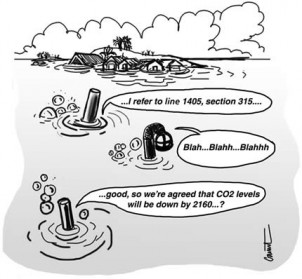
By Khadija Sharife.
EJOLT collaborator and investigative journalist Khadija Sharife just published on climate adaptation for Africa in The Africa Report. Here are some excerpts:
“The impacts of pollution on vulnerable continents have been brought to the fore. The most pressing case is Africa, a continent located on the frontline of climate devastation.” She quote’s experts to illustrate the size of the gap: while $30bn in adaptation money per year is needed, the average amount of adaptation money received in the 2004-2011 period was more than 1000 times less. To put that in even sharper contrast she adds: “The trillions in outstanding ecological debt and reparations – conservatively calculated by ecological economists at the University of California, Berkeley – made place for ‘voluntary assistance’”.
Khadija then dissects the global funds set up to deal with adaptation. Apparently, the Green Climate Fund (GCF) has yet to identify public sources of funding. She adds: “29 of the 35 Norway’s Norfund vehicles are based in tax havens, such as Mauritius, the Cayman Islands, Delaware (US), Luxembourg and Panama. The same can be applied to others, including 7 of 12 funds belonging to the European Investment Bank (EIB). Once donors disburse funds, the pledge is considered ‘fulfilled’ whether or not the funds reach the African country.”
The Clean Technology Fund (CTF), one of the World Bank’s climate financial intermediary funds (FIFs), doesn’t do a better job. “Of the $1.5 billion approved for projects in Africa, no funds have allegedly been disbursed in Africa.” The problem is not in selection final destinations only. “FIFs tend to absorb excessive fees, remuneration and payments as joint shareholders, all of which represent an unacceptable loss to the funders of climate finance, and recipients.”
Climate funds by donors can also be invested in ways that undermine, ‘contain’, or sustain the problem “Countries like Tunisia received climate funding from Italy to install military surveillance along the coast, allegedly to prevent migrants from penetrating EU shores.”
“In total, just 5 percent of total global climate funding went to adaptation – helping African economies come to terms with ruined and depleted ecologies. This was to sustain and protect ecologies described by the head of UNEP’s Green Economy report – Sukhdev, as comprising 45-90 percent of the GDP of the poor in some developing countries.” The full article is here:
http://www.theafricareport.com/Columns/climate-funds-first-come-least-served.html


